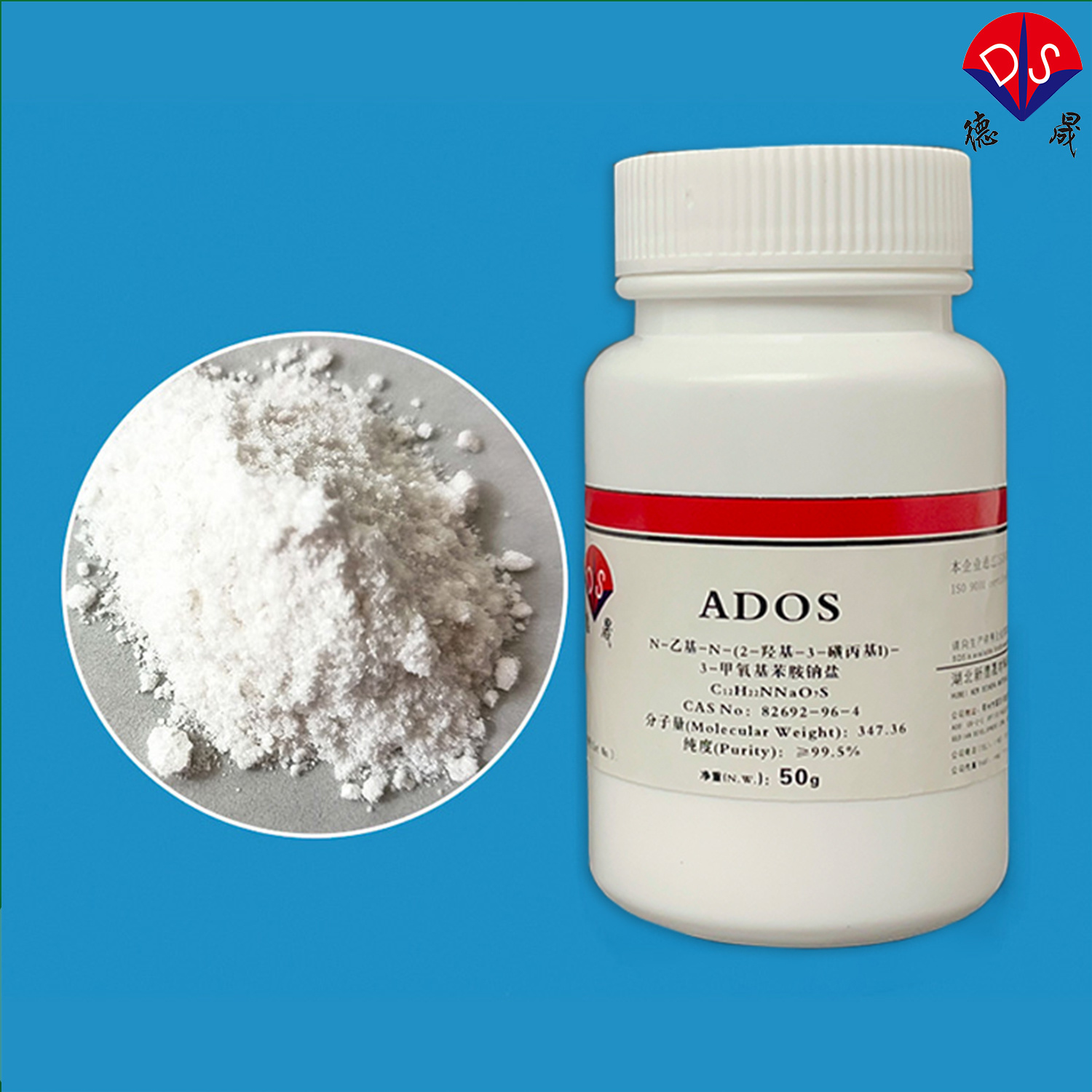Reasons and optimization strategies for weak ADOS signal of chromogenic substrate
Release time:
2025-04-16
The chromogenic substrate ADOS plays an important role in biochemical experiments, especially in enzyme activity detection, immunoassay, and molecular biology research. However, in practical use, sometimes the problem of weak color signal may be encountered, which not only affects the accuracy of experimental results, but also brings many troubles to researchers. This article aims to explore the reasons for the weak signal of the chromogenic substrate ADOS and propose corresponding optimization strategies.

ADOS powder
The reason for the weak signal of the chromogenic substrate ADOS
1. Improper experimental conditions
Experimental conditions are one of the key factors affecting color reactions. Firstly, temperature has a significant impact on the color reaction of ADOS. Excessive or insufficient temperature can lead to a decrease in enzyme activity or degradation of substrates, thereby affecting the intensity of color changes. Secondly, pH value is also an important factor affecting color reaction. Deviation from the optimal pH range may lead to a decrease in enzyme activity or a decrease in the affinity between the substrate and the enzyme, thereby weakening the color change.
2. Chemical interference
In complex biological samples, various chemicals may interfere with the color reaction of ADOS. For example, metal ions such as iron and copper may act as catalysts or inhibitors to affect the progress of the reaction. Thereby reducing the intensity of color changes. Strong oxidants may directly oxidize ADOS or enzymes, leading to a decrease or disappearance of the color signal.
3. Substrate and enzyme activity issues
The storage and usage conditions of substrate ADOS have a significant impact on its sensitivity. If stored improperly, such as at an inappropriate temperature or under improper lighting, it may lead to a decrease in sensitivity or failure. In addition, the activity of enzymes may also be influenced by various factors, such as temperature, pH value, the presence of inhibitors and activators, etc. These factors may lead to changes in enzyme activity, thereby affecting the intensity of color changes.
4. Operational errors
Errors during the operation process are also one of the reasons for the weak color signal. For example, inaccurate addition of reagents may lead to insufficient or excessive reaction; Improper control of reaction time may affect the degree of color change; Uneven mixing of the solution may lead to insufficient or excessive local reactions, thereby affecting the overall signal strength.
Optimization strategy
1. Strictly control the experimental conditions
In order to ensure the accuracy and reliability of the color reaction, the experimental conditions should be strictly controlled. Firstly, an appropriate temperature range should be selected to avoid the impact of excessively high or low temperatures on enzyme activity or substrate stability. Secondly, the pH value should be adjusted to the optimal range to enhance enzyme activity and substrate affinity with the enzyme. In addition, the use of chemicals that may interfere with color reactions should be avoided.
2. Optimize the storage and usage conditions of substrates and enzymes
In order to maintain the activity of the substrate ADOS and enzyme, their storage and usage conditions should be optimized. The substrate should be stored in a cool, dry, and dark environment, avoiding prolonged exposure to high temperatures or light. Enzymes should be stored under appropriate temperature and pH conditions, avoiding contact with inhibitors. Before use, substrates and enzymes should be adequately pre treated and calibrated to ensure their sensitivity and accuracy.
3. Improve operational accuracy
In order to reduce the impact of operational errors on experimental results, the accuracy of the operation should be improved. For example, when adding reagents, a precise pipette or burette should be used to ensure accurate dosage; When controlling reaction time, a timer or timer should be used to ensure accurate reaction time; When mixing solutions, appropriate stirrers or oscillators should be used to ensure uniform mixing of the solution.

Product packaging
Conclusion
The chromogenic substrate ADOS has wide application value in biochemical experiments, but there may be a problem of weak signal during use. To solve this problem, it is necessary to strictly control experimental conditions, optimize the storage and use conditions of substrates and enzymes, improve operational accuracy, and introduce advanced detection technologies. By implementing these optimization strategies, the sensitivity and accuracy of color reactions can be significantly improved, providing researchers with more reliable and accurate experimental results.
Desheng is a well-established blood testing reagent company with years of experience in research and development and production. It has gathered products including chemiluminescence reagents, biological buffering agents,chromogenic substrate, enzyme preparations, blood collection tube additives, antigen antibodies, etc. It has deep research on the new Trinder's reagent. The ADOS products produced by the company have a purity of over 99% detected by HPLC. The product packaging is standardized to ensure safe transportation and timely after-sales service, so that customers can receive satisfactory products.
News
Contact details
Contact number
Address: C8, Guanggu United Science and Technology City, Ezhou City, Hubei Province
Fax:0711-3704 589
Follow us



